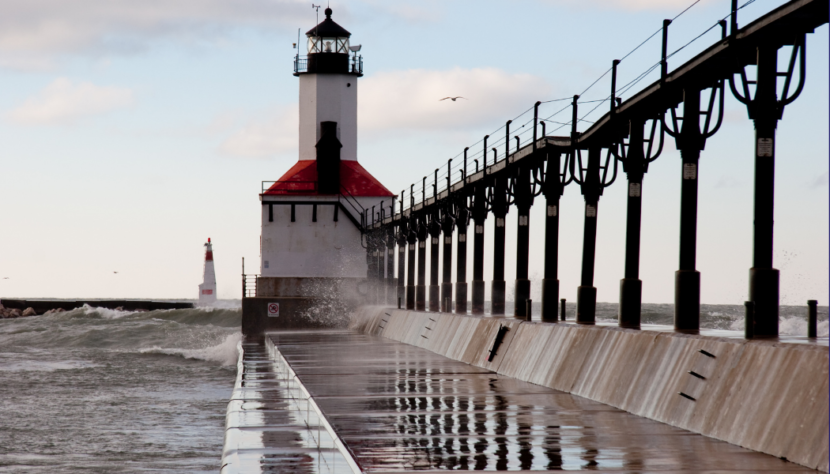By Mike Salisbury, Literary Agent and Write Michigan Judge
At bedtime, I snuggle up with my seven-year-old daughter and we play a game called “Three Questions.” I usually ask her about school, or the book we read at bedtime, or maybe her opinion on dinner. For her, it’s all about my favorites. What’s your favorite color? What’s your favorite type of dog? What’s your favorite type of sea creature? On this night, she uses her last question to ask me: What’s your favorite myth?
If you are like me, the parent of littles, you know about bedtime. It’s a lot like the last 100-meters of a marathon-long day. I stumble over her question. I’m not sure I know what a myth is, exactly. I’m not sure I can define it. My tired parent brain tries to buy time.
“What’s your favorite myth?” I ask her.
“Mermaids.” She’s too quick.
Before I tell you how I answered her question, let’s talk about myths and how they can make our stories better.
So, what’s a myth and what do they have to do with writing short stories?
A simple definition of what a myth is: a traditional story, especially one concerning the early history of a people or explaining some natural or social phenomenon, and typically involving supernatural beings or events. As Michiganders, we are surrounded by myths, legends, folklore, urban legends, fables, ghost stories, wives’ tales, to name a few. For the sake of this short essay, I’m going to lump them all together. Let’s think of myths in a general sense as a variety of stories shared in a community.
Place is where everything begins for me as a short story writer. I like to stick my characters in a specific place, and myths make for great glue. There’s a writing proverb that setting is character, and I really subscribe to this. I love when a writer elevates setting to this level, and a way we can do that in our own stories is by noticing these local myths.
Let’s look at a couple of examples of Michigan stories that do this well.
You might be familiar with the Paulding Light. It was featured in an episode of Unsolved Mysteries. If you are a child of the 80s, you probably can still hear the haunting voice of Robert Stack saying, “Join me. Perhaps you may be able to help solve a mystery.” For the unvitiated, the Paulding Light is a ghost light, an unexplained phenomenon in Paulding, Michigan. Legend has it it’s the lamp from a ghost miner. In Ander Monson’s short story “Other Electricities,” the title story from his short story collection, the Paulding Light is a destination, another ghost mentioned among the many ghosts that inhabit this and other stories in the collection. A good myth is a versatile tool for writers. It helps color in the background of your setting, and it tells the reader something about the characters – those who believe and those who don’t. That’s what Monson is doing with the Paulding Light, he’s using it to shape our impression of these characters.
If you’re not a fan of the spooky myth variety, you could look at how Charles Baxter uses cars and trucks that have fallen through the ice as a point of curiosity for teenage lovers in Baxter’s short story, “Snow.” “Cars belonging to ice fishermen were always breaking through the ice but swallowing up a car was a slow process in January, though not in March or April, and the drivers usually got out safely,” the narrator shares with us early in the story. Every town has a point of interest, big or small, well known or only known by locals. Like Monson, Baxter’s local myth, the graveyard of sunken car wrecks beneath the ice, is a destination. The characters are on an adventure to see what they can find. As writers, we should always look for details that give our characters reasons to move around, go somewhere, do something; adventures are a great way to do that.
My daughter has yet to ask me what my favorite short story is, hopefully one day we’ll get to it, but if she does, I will be ready with my answer: “The Inventor, 1972,” by Bonnie Jo Campbell. In it, a man attempts to save a young girl he’s accidentally hit with his car. Both the man and the young girl share a tragic past, where a young man drowned attempting to use his own homemade scuba gear. Tragedy plays a huge part in myths. It acts as a warning, something we pass down to each other. For Campbell’s characters, it’s a shared language, past informing the future. A town’s history, including the tragedies, are something to consider for our stories.
I love a myth I can’t stop thinking about. Writer Pam Houston calls these inklings of stories, “Glimmers.” Myths make for great glimmers, in my opinion. I think of them as an invitation to write further. Tell me about a myth, and I will show you the beginnings of a good story idea. Michigan is a weird place, full of local myths and legends. As writers, it’s up to us to explore these stories and make them our own. Find your favorite and use it in your next short story.
Not sure where to find Michigan myths? Weird Michigan is a great resource for learning more about these types of stories. I love this book for inspiration. It’s like a Michigan writing prompt. Get weird, seriously. Which brings me back to my daughter’s question.
So how did I answer her question about what’s my favorite myth? I answered, “werewolves.” It was a lousy answer, to tell you the truth. I was tired and my mind had that evening fog settling in. But if I could edit my answer – and maybe I will at our next bedtime – I would say the Dog Man myth. Don’t know that one? It’s in the Weird Michigan book. Check it out.
Books mentioned in this blog post:
American Salvage by Bonnie Jo Campbell
Gryphon: New and Selected Stories by Charles Baxter
Other Electricities: Stories by Ander Monson
Weird Michigan: Your Travel Guide to Michigan’s Local Legends and Best Kept Secrets by Linda S Godfrey


